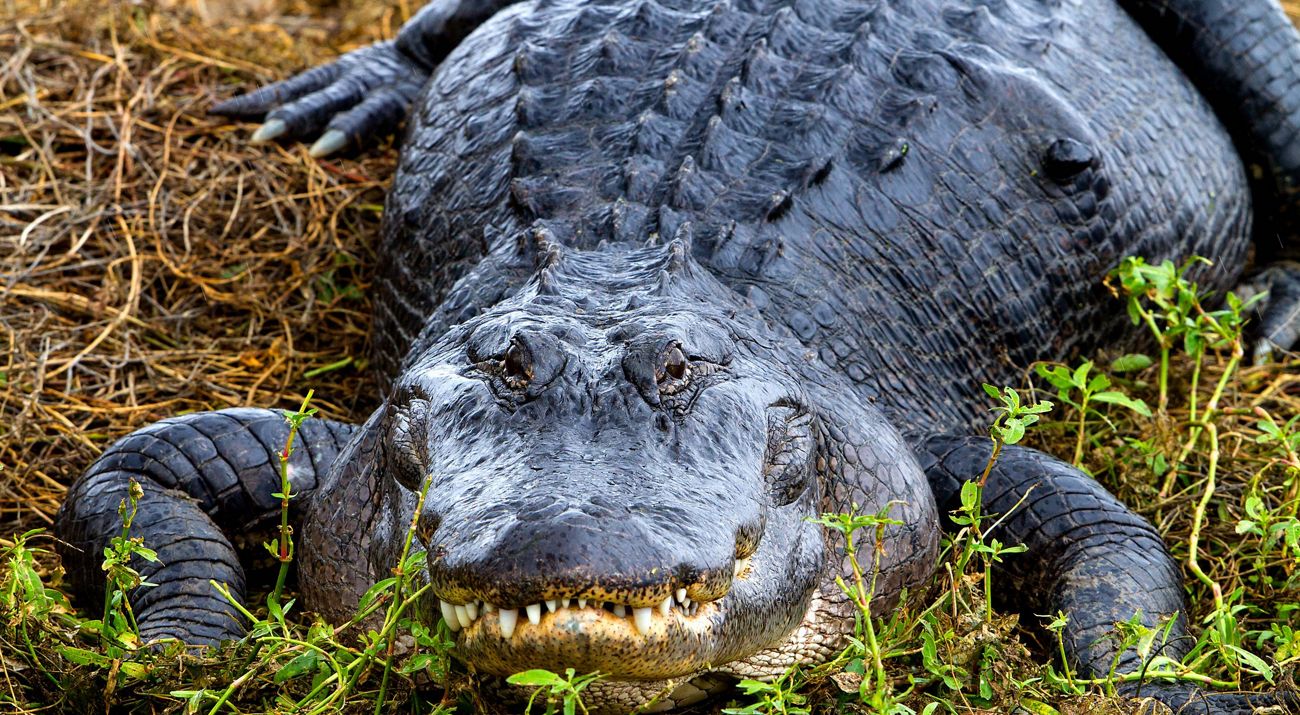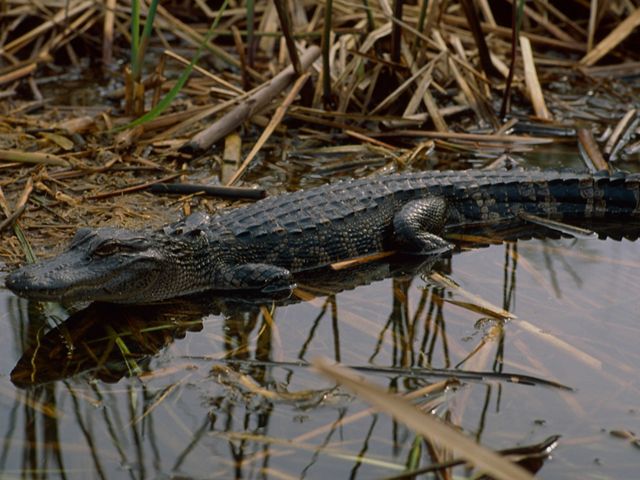
Meet the American Alligator
The American alligator ranges throughout the southeast of the United States in freshwater marshes, rivers and swamps, where it basks by day and hunts by night. It is one of North America’s largest reptiles, growing as long as 18 feet. The American alligator can be distinguished from its relative the American crocodile by its round snout, darker color and the absence of visible teeth when the mouth is closed.
A remarkable hunter, the American alligator:
preys on insects, small fish and frogs as a juvenile
begins hunting turtles, small mammals, birds as it matures
can eventually take animals as large as deer
Despite its propensity for cannibalism, the alligator cares for its young. After a surprisingly slow and tender courtship, females build a mound nest, lay 25-52 eggs, let them incubate for approximately 65 days, then free the hatchlings when they cry to her. Young may remain with the mother for up to three years. If they survive the dangerous juvenile years, alligators may live 35-50 years in the wild.

Protecting the American Alligator
Hunted widely for meat and belly skin, which makes high-quality leather, the alligator was listed as endangered in 1967. Despite this designation, persistent poaching continued well into the 1970s. Concerted conservation efforts prevailed, however, and the creature was removed from the Endangered Species List in 1987. Over a million now live in the wild.
The Nature Conservancy is helping to further protect these incredible reptiles by conserving and restoring the wetland habitats on which alligators depend.
Take Action
Join the work of The Nature Conservancy by making a gift today to help preserve and restore critical habitats around the world, like the wetlands that are home to the American alligator.